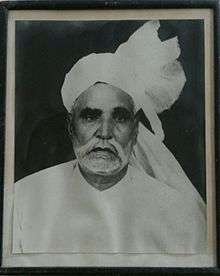Zail, British Indian
Zail (ज़ैल) was a revenue and administrative unit, extending between forty and hundred villages, under an officer in charge Zaildar in the colonial rural administration of Punjab in British India.[1](p xxv)
Demarcation of Zail
Zails were established and demarcated by the District collector during the land revenue settlement exercise. District collector also appointed one Zaildars for-life to each Zail, who were equivalent to the Chaudharis (feudal zamindars) of earlier times and were hand-picked by the deputy-commissioner, who based his decision on issues such as caste or tribe, local influence, extent of landholding, services rendered to the state by him or his family, and personal character and ability.[1](pp97–98)
Revenue from Zail
Zaildar collected the revenue from the cluster of villages under him and passed it to the British raj district collectors, Zaildars were remunerated for their duties with life grants of either fixed amount[2] or grant equal to one per cent of the revenue of their zails from the assessment of any single village that they chose.[3]
Impact and Legacy of Zaildari System
Zails and Zaildari system extended the influence of the colonial state right into the villages.[1]
